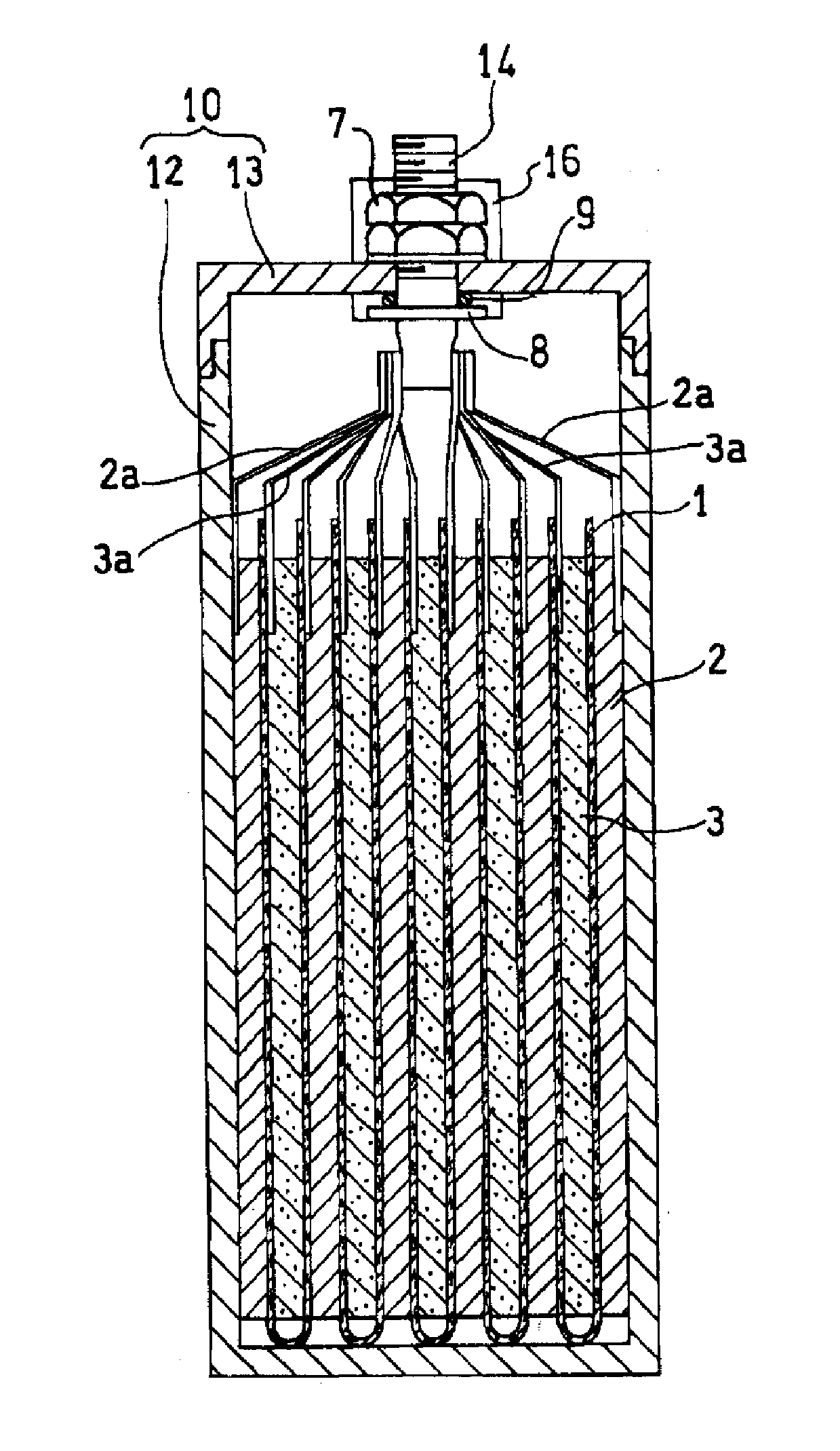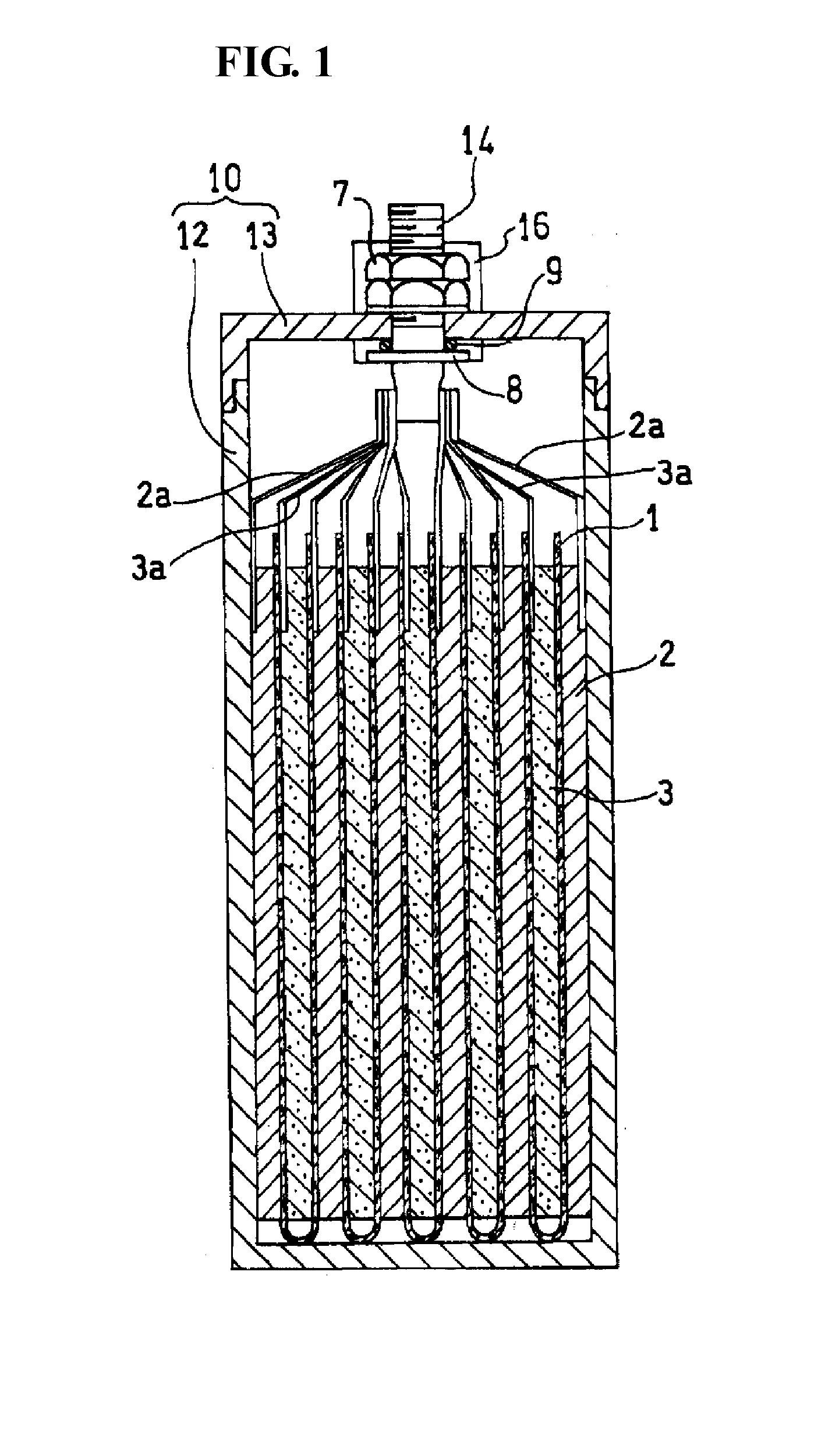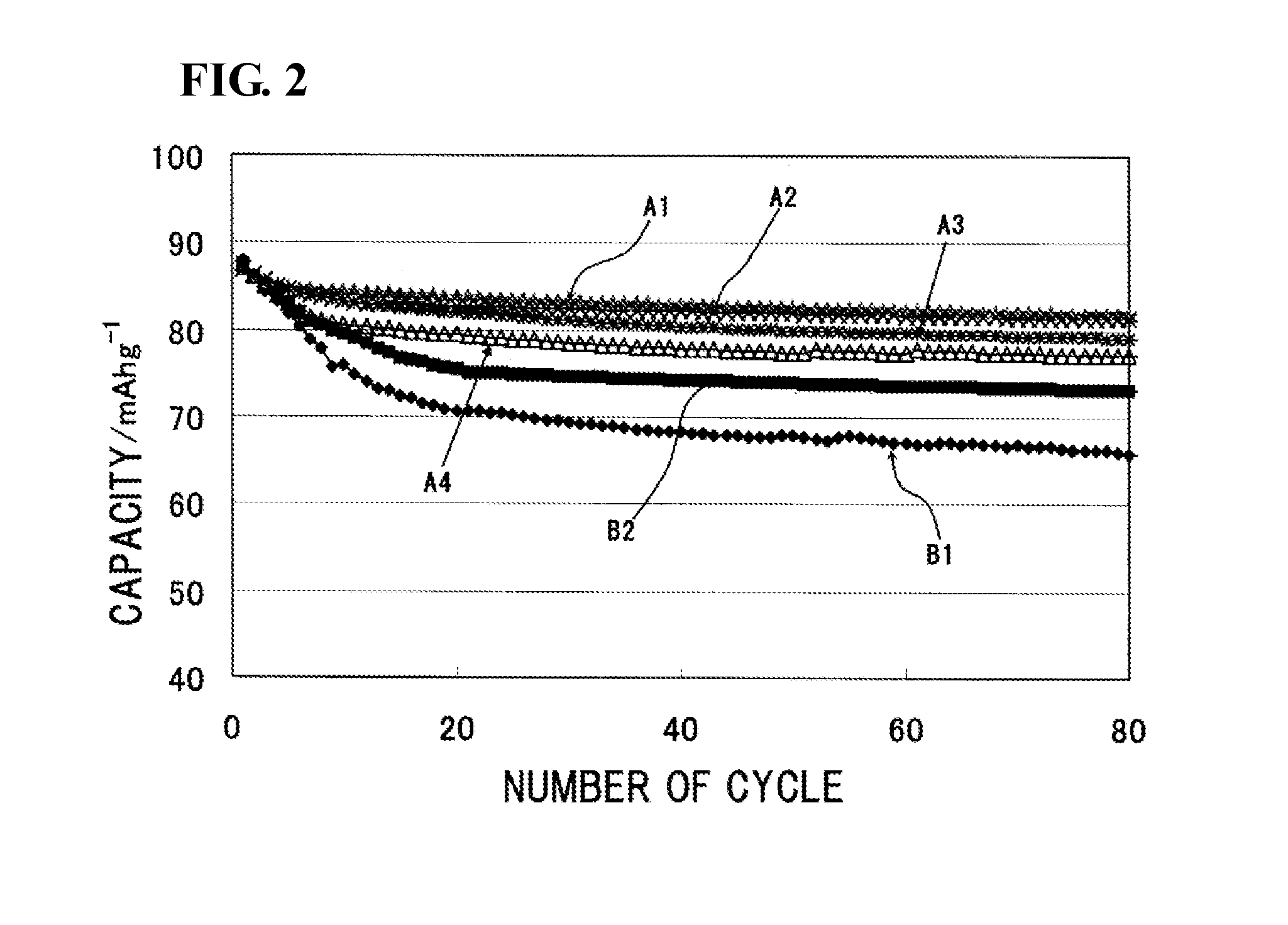Sodium molten salt battery
a technology of sodium molten salt and battery, applied in the direction of batteries, deferred-action cells, cell components, etc., can solve the problems of easy decomposition of electrolytes on surfaces, low heat resistance, and poor battery capacity, and achieve excellent cycle characteristics and improved battery capacity
- Summary
- Abstract
- Description
- Claims
- Application Information
AI Technical Summary
Benefits of technology
Problems solved by technology
Method used
Image
Examples
example 1
(1) Production of Positive Electrode
[0113]First, 85 parts by mass of NaCrO2 (positive electrode active material), 10 parts by mass of acetylene black (conductive assistant), and 5 parts by mass of polyvinylidene fluoride (binder) were mixed together with N-methyl-2-pyrrolidone to prepare a positive electrode mixture paste. The resulting positive electrode mixture paste was applied to Al foil, dried, pressed, and vacuum-dried at 150° C. Punching was then performed to produce a disk-shaped positive electrode (diameter: 12 mm, thickness: 85 μm). The weight of the positive electrode active material per unit area of the resulting positive electrode was 13.3 mg / cm2. The amount of water in the positive electrode after the vacuum drying was determined by the Karl Fischer method and found to be 100 ppm or less. The reversible capacity of the positive electrode per unit weight of the positive electrode active material was 100 mAh / g.
(2) Production of Negative Electrode
[0114]First, 96 parts by ...
PUM
 Login to View More
Login to View More Abstract
Description
Claims
Application Information
 Login to View More
Login to View More - R&D
- Intellectual Property
- Life Sciences
- Materials
- Tech Scout
- Unparalleled Data Quality
- Higher Quality Content
- 60% Fewer Hallucinations
Browse by: Latest US Patents, China's latest patents, Technical Efficacy Thesaurus, Application Domain, Technology Topic, Popular Technical Reports.
© 2025 PatSnap. All rights reserved.Legal|Privacy policy|Modern Slavery Act Transparency Statement|Sitemap|About US| Contact US: help@patsnap.com



